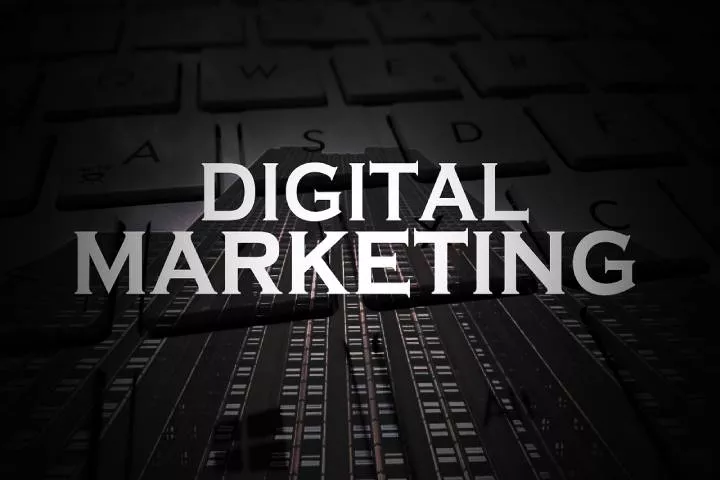Business
How to Run an Effective Marketing Campaign for Your Business
There’s no universal business marketing playbook, but effective marketing campaign frameworks exist. Run an Effective Marketing Campaign for Your Business.

Marketing shouldn’t be difficult if you have the right marketing campaign approach. Unfortunately, not any crafted marketing campaign will work. You need to be focused, precise and deliberate with your campaign. There’s no universal business marketing playbook, but effective marketing campaign frameworks exist. An effective marketing campaign requires a deliberate approach and has the following three requirements:
- A great marketing team
- A well-crafted plan/strategy
- The right marketing tools
Let’s discuss them in detail below.
Table of Contents
1. Hire the Right Marketing Team
A well-rounded marketing team with the right skills is a crucial element of your marketing strategy that can make or break your business. Yet, the biggest challenge for many is outsourcing business research to find a proficient, and skilled marketing team.
You don’t need the most qualified or the most experienced marketers. Experience counts, but it’s not everything. You need a marketing team that is motivated and focused on defining your ideal customers and producing, managing, and distributing targeted messaging for organic and paid channels. To run an effective marketing campaign, your team should have a mix of the following skills:
- Traditional Marketing
- Digital marketing and demand generation
- Creative design (graphic design)
- Search engine optimization (SEO)
- Content marketing and email marketing
- Copywriters
- Ads specialist
- Social media marketing
- Research and analytics
- Project management
- Relationship marketing
- Account-based marketing

2. Craft a Clear Marketing Plan or Strategy
The team needs the plan to deliver an effective campaign. Your marketing plan will point the team to their deliverables and how they achieve them. The plan will also show who does what, how, when and by which means. Include the following in your marketing plan:
- Design your marketing goal. What message do you want to deliver to your audience? Goals can include driving leads, Promoting brand awareness, gathering feedback, generating revenue, advertising an event, and boosting user engagement. Make each message clear for easy targeting.
- Define your customers and audiences. Each marketing message, product, and channel must have a distinct audience.
- Decide your marketing channels. Where is your audience and how do you want to reach them? Your audience dictates your marketing channel. Clearly define where each audience category spends most of the time and choose the channel that reaches them best. Channels can be email, social media, website, videos, ads, content for organic search, and more.
- Craft your marketing message. Create a deliberate marketing message that targets your customers based on your goal, audience, and channel. What immediate solution are you offering to their problem, and how will they find you?
- Establish how you’ll analyze and measure your campaign. Every marketing campaign must have KPIs. This will look different depending on your channels, and the answer will depend on your goal.
3. Have the Right Marketing Tools
Once you have a team and plan, your marketing campaign needs the right marketing tools called marketing technology. They need marketing tools to facilitate their work, including automation. You will need a mix of different tools to perform different marketing functions. Examples of marketing tools you may need are:
- Sales and Marketing automation Tools or CRM tools like HubSpot, Zoho, and Salesforce.
- Conversion optimization tools for conversion rate optimization (CRO) like Word stream’s Landing Page Grader, Unbounce, and Optimizely.
- Search engine optimization tools (SEO) and analytics tools like Streamdal, Ahrefs, SEMRush, WordStrea, or ScreamingFrog.
- Creative design tools like Adobe Photoshop, Canva, and Scribe
- Email marketing tools like MailChimp, Constant Contact and Klaviyo
- Social media marketing automation tools like Buffer, and SproutSocial
- Project management tools like Monday.com, Trello, Notion, and Scribe
Used correctly, these tools can help businesses create effective marketing campaigns, and stay ahead of the competition.
4. Endnote
A good, deliberate marketing campaign can achieve your business and brand goals. However, your campaign needs the right team, tools, and plan to ensure that goal and business success. Even if your business wants to run a simple local campaign, you must find the right and effective campaign plan.
Business
Navigating the Process of Selling Deceased Estate Shares
This article aims to provide a comprehensive guide to selling shares from a deceased estate. Process of Selling Deceased Estate Shares.

Table of Contents
1. Understanding the Basics of Selling Deceased Estate Shares
Dealing with a deceased estate can be a challenging and emotional process, especially when it comes to handling financial assets like shares. This article aims to provide a comprehensive guide to selling shares from a deceased estate.
2. What are Deceased Estate Shares?
Deceased estate shares refer to the stocks and shares that were owned by an individual who has passed away. These shares become part of the deceased’s estate and are subject to the terms of their will or estate plan.
3. The Importance of Valuing the Shares
The first step in selling deceased estate shares is to obtain a current valuation. This valuation is crucial for several reasons: it helps in distributing the estate among beneficiaries, it may be necessary for tax purposes, and it gives an idea of the market value of the shares.
4. Legal Requirements and Executor Responsibilities
The executor of the estate plays a pivotal role in the management and distribution of the deceased’s assets. This section will cover the legal responsibilities and steps the executor needs to take to lawfully sell the shares.
5. Obtaining Probate
Before any action can be taken with the shares, it’s often necessary to obtain probate. Probate is a legal process that confirms the executor’s authority to deal with the deceased’s assets.
Transferring Shares into the Executor’s Name
Once probate is granted, shares may need to be transferred into the name of the executor. This process varies depending on the company and the type of shares.
6. The Process of Selling Shares
After completing legal formalities, the executor can proceed with selling the shares. This section will outline the steps involved in this process, including choosing a brokerage or financial service, understanding market conditions, and making informed decisions.
Deciding on the Right Time to Sell
Timing can significantly impact the returns from selling shares. Executors need to consider market conditions and financial advice to determine the best time to sell.
Completing the Sale
This subsection will detail the actual process of selling shares, including placing orders, handling transaction fees, and ensuring all regulatory requirements are met.

7. Navigating Tax Implications and Reporting
Managing tax obligations is a critical aspect of selling deceased estate shares. This section will explain the potential tax implications and the importance of accurate reporting for both capital gains tax and inheritance tax considerations.
Understanding Capital Gains Tax Responsibilities
When shares are sold, any profit made from the time of the deceased’s passing to the sale date may be subject to capital gains tax. Executors need to be aware of these implications and plan accordingly.
Inheritance Tax Considerations
In some jurisdictions, the value of the deceased estate’s shares might impact inheritance tax calculations. It’s essential for executors to understand these aspects in order to ensure compliance with tax laws.
8. Common Challenges and How to Overcome Them
Selling deceased estate shares can present unique challenges. This section will discuss common issues such as disputed wills, fragmented information about the shares, and market volatility.
Dealing with Disputed Wills and Beneficiary Disagreements
Disputes over the will or disagreements among beneficiaries can complicate the process. Executors must handle these situations delicately and legally.
Managing Market Volatility
Shares can be subject to market fluctuations. Executors should be prepared for this volatility and may need to consult financial advisors to navigate these waters effectively.
9. Tips for Executors Handling Deceased Estate Shares
This section will provide practical advice for executors, including the importance of seeking professional advice, keeping thorough records, and communicating clearly with beneficiaries.
Seeking Professional Financial and Legal Advice
The complexity of selling shares from a deceased estate often necessitates professional advice. This can range from legal counsel to financial advisory services.
Record Keeping and Communication with Beneficiaries
Maintaining transparent and thorough records is crucial. Executors should also prioritize clear and consistent communication with all beneficiaries to avoid misunderstandings.
Conclusion
Selling shares from a deceased estate is a responsibility that requires careful attention to legal, financial, and interpersonal dynamics. By understanding the process, staying informed about tax obligations, and tackling challenges head-on, executors can fulfill their duties effectively and respectfully.

 Instagram3 years ago
Instagram3 years agoBuy IG likes and buy organic Instagram followers: where to buy them and how?

 Instagram3 years ago
Instagram3 years ago100% Genuine Instagram Followers & Likes with Guaranteed Tool

 Business5 years ago
Business5 years ago7 Must Have Digital Marketing Tools For Your Small Businesses

 Instagram4 years ago
Instagram4 years agoInstagram Followers And Likes – Online Social Media Platform





















